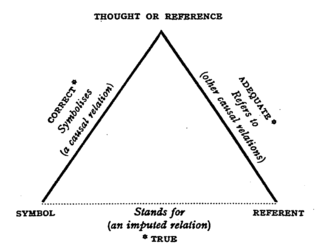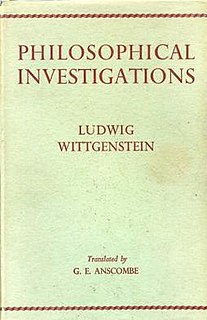 W
WAlciphron, or The Minute Philosopher is a philosophical dialogue by the 18th-century Irish philosopher George Berkeley wherein Berkeley combated the arguments of free-thinkers such as Mandeville and Shaftesbury against the Christian religion. It was first published in 1732.
 W
WThe Dissertatio de arte combinatoria is an early work by Gottfried Leibniz published in 1666 in Leipzig. It is an extended version of his first doctoral dissertation, written before the author had seriously undertaken the study of mathematics. The booklet was reissued without Leibniz' consent in 1690, which prompted him to publish a brief explanatory notice in the Acta Eruditorum. During the following years he repeatedly expressed regrets about its being circulated as he considered it immature. Nevertheless it was a very original work and it provided the author the first glimpse of fame among the scholars of his time.
 W
WAn Essay Towards a Real Character, and a Philosophical Language is the best-remembered of the numerous works of John Wilkins, in which he expounds a new universal language, meant primarily to facilitate international communication among scholars, but envisioned for use by diplomats, travelers, and merchants as well. Unlike many universal language schemes of the period, it was meant merely as an auxiliary to—not a replacement of—existing natural languages.
 W
WFrege: Philosophy of Language is a book about the philosopher Gottlob Frege by the British philosopher Michael Dummett.
 W
WKnowledge of Language: Its Nature, Origin, and Use is a book by American linguist Noam Chomsky, first published in 1986. In this book, Chomsky deals with topics in the philosophy of language and the philosophy of mind. He argues that the study of linguistic structures provides insight into the workings of human mind.
 W
WLanguage, Truth and Logic is a 1936 book about meaning by the philosopher Alfred Jules Ayer, in which the author defines, explains, and argues for the verification principle of logical positivism, sometimes referred to as the criterion of significance or criterion of meaning. Ayer explains how the principle of verifiability may be applied to the problems of philosophy. Language, Truth and Logic brought some of the ideas of the Vienna Circle and the logical empiricists to the attention of the English-speaking world.
 W
WLimited Inc is a 1988 book by the French philosopher Jacques Derrida, containing two essays and an interview.
 W
WLinguistics and Philosophy is a peer reviewed journal addressing "structure and meaning in natural language". This journal, along with Studies in Language, is a continuation of the journal Foundations of Language.
 W
WMeaning and Necessity: A Study in Semantics and Modal Logic is a book about semantics and modal logic by the philosopher Rudolf Carnap. The book, in which Carnap discusses the nature of linguistic expressions, was a continuation of his previous work in semantics in Introduction to Semantics (1942) and Formalization of Logic (1943). Considered an important discussion of semantics, it was influential and provided a basis for further developments in modal logic.
 W
WThe Meaning of Meaning: A Study of the Influence of Language upon Thought and of the Science of Symbolism (1923) is a book by C. K. Ogden and I. A. Richards. It is accompanied by two supplementary essays by Bronisław Malinowski and F. G. Crookshank. The conception of the book arose during a two-hour conversation between Ogden and Richards held on a staircase in a house next to the Cavendish Laboratories at 11 pm on Armistice Day, 1918.
 W
WNaming and Necessity is a 1980 book with the transcript of three lectures, given by the philosopher Saul Kripke, at Princeton University in 1970, in which he dealt with the debates of proper names in the philosophy of language. The transcript was brought out originally in 1972 in Semantics of Natural Language, edited by Donald Davidson and Gilbert Harman. Among analytic philosophers, Naming and Necessity is widely considered one of the most important philosophical works of the twentieth century.
 W
WPhilosophical Investigations is a work by the philosopher Ludwig Wittgenstein. The book was published posthumously in 1953. Wittgenstein discusses numerous problems and puzzles in the fields of semantics, logic, philosophy of mathematics, philosophy of psychology, philosophy of action, and philosophy of mind, putting forth the view that conceptual confusions surrounding language use are at the root of most philosophical problems. Wittgenstein alleges that the problems are traceable to a set of related assumptions about the nature of language, which themselves presuppose a particular conception of the essence of language. This conception is considered and ultimately rejected for being too general; that is, as an essentialist account of the nature of language it is simply too narrow to be able to account for the variety of things we do with language. This view can be seen to contradict or discard much of what he argued in his earlier work Tractatus Logico-Philosophicus (1921).
 W
WThe Roots of Reference is a 1974 book by the philosopher Willard Van Orman Quine, in which the author expands on his earlier concepts about the inscrutability of reference and examines problems with traditional empiricism, arguing for a naturalized epistemology based on holism.
 W
WThe Instruction of Imagination: Language as a Social Communication Technology is a 2015 book by Daniel Dor. In it, Dor proposes a new theoretical characterization of language as a social communication technology, collectively constructed for the specific function of the instruction of imagination. It makes four foundational arguments:Language is social: it is a property of the social network, and the product of a collective process of invention and development. It resides between speakers, not in them, at a level of organization and complexity that transcends the individual mind. Language is a communication technology: it develops, propagates and changes like other communication technologies humans have invented, such as the book, fax, telephone, and social media. Its modus operandi is best analyzed in technological terms. Language is designed for the specific function of the instruction of imagination: unlike other systems of communication, language allows speakers to instruct their interlocutors in the process of imagining the intended experience. Language is collectively constructed through the continuous process of experiential mutual-identification for language: in the process, individuals systematically isolate and highlight points of commonalities between their experiences, formally mark thems, and develop mutually-identified prescriptive norms for their use as instructions for imagination.
 W
WThe Tractatus Logico-Philosophicus is the only book-length philosophical work by the Austrian philosopher Ludwig Wittgenstein that was published during his lifetime. It is recognized by philosophers as a significant philosophical work of the twentieth century. The project had a broad goal: to identify the relationship between language and reality and to define the limits of science. The work was originally published in German in 1921 as Logisch-Philosophische Abhandlung. In 1922 it was published together with an English translation; the English text and that book bear the Latin title, which was suggested by G. E. Moore as homage to Baruch Spinoza's Tractatus Theologico-Politicus (1670).
 W
WWittgenstein on Rules and Private Language is a 1982 book by philosopher of language Saul Kripke in which he contends that the central argument of Ludwig Wittgenstein's Philosophical Investigations centers on a devastating rule-following paradox that undermines the possibility of our ever following rules in our use of language. Kripke writes that this paradox is "the most radical and original skeptical problem that philosophy has seen to date" (p. 60). He argues that Wittgenstein does not reject the argument that leads to the rule-following paradox, but accepts it and offers a "skeptical solution" to alleviate the paradox's destructive effects.